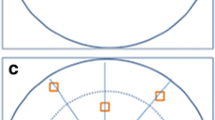Abstract
The point count method (PCM) and time species count (TSC) are thought to be applicable to specific bird assemblages and habitat types and to give different kind of outputs: quantitative (abundances) and qualitative (scores), respectively. In this work, we tested if the faster TSC method can be used instead of the time-consuming PCM. We compared results obtained from the application of both methods to bird assemblages in three different habitat types in mountains of Central Italy with different levels of spatial heterogeneity (oak and beech woods, and open-forest mosaics). The application of both methods to the forest ecosystems revealed the absence of a direct correlation between PCM abundance values and TSC mean scores, highlighting that the latter method did not explain the variation in species abundance. The opposite was true in the mosaic habitats. In the Apennine forest ecosystems, species sampled first in the TSC sampling sessions did not correlate with species abundance values evaluated by means of PCM. The species with the highest PCM values (i.e., the more abundant species) were randomly distributed in all of the TSC 10-min sampling subsessions. Therefore, we rejected the hypothesis that the species sampled first (e.g., in the first 10 min) in TSC are more abundant than those sampled in the next 10 min subsession, and so on. This result differs greatly from that found for non-Mediterranean habitat types that are richer in species number (e.g., tropical forests and savannahs), where scores obtained for single bird species when applying the TSC method correlate well with the species abundance parameters obtained using quantitative methods. In the mountainous complex of the Mediterranean area, the TSC method should only be applied in mosaic habitats, which are richer in species, more spatially heterogeneous, and possess a high γ-diversity at the landscape scale, and thus show a direct correlation between species abundance and TSC scores.

Similar content being viewed by others
References
Bennun LA, Waiyaki EM (1993) Using times species count to compare avifaunas in the Mau Forests, south-west Kenya. In: Wilson RT (ed) Birds of African environments (Proceedings of the Eighth Pan-African Congress). Ann Mus Royal Afr Centr (Zool.), Tervuren, 268:366
Bibby CJ, Burgess ND (1992) Bird census techniques. Academic, London
Blondel J, Aronson J (1999) Biology and wildlife of the Mediterranean region. Oxford University Press, Oxford
Freeman SN, Pomeroy DE, Tushabe H (2003) On the use of times species counts to estimate avian abundance indices in species-rich communities. Afr J Ecol 41:337–348
Koleff P, Lennon JJ, Gaston KJ (2003) Are there latitudinal gradients in species turnover. Global Ecol Biogeogr 12:483–498
Magurran A (2004) Measuring biological diversity. Blackwell, Malden
Pirone G (1995) Alberi, arbusti e liane d’Abruzzo. Cogecstre Edizioni, Penne
Pomeroy DE (1992) Counting birds. African Wildlife Foundation, Nairobi
Pomeroy DE, Dranzoa C (1997) Methods of studying the distribution, diversity and abundance of birds in East Africa—some quantitative approaches. Afr J Ecol 35:110–123
Pomeroy DE, Tengecho B (1986) Studies of birds in a semi-arid area of Kenya III—the use of “times species count” for studying regional avifaunas. J Tropic Ecol 2:231–247
SPSS Inc. (2006) SPSS for Windows (version 15.0). SPSS Inc., Chicago
Sutherland WJ (2006) Ecological census techniques—a handbook, 2nd edn. Cambridge University Press, Cambridge
Tammaro F, Pirone G (1995) Il Parco nazionale della Majella. Natura e Montagna 42:45–64
Tews J, Brose U, Grimm V, Tielbörger K, Wichmann MC, Schwager M, Jeltsch F (2004) Animal species diversity driven by habitat heterogeneity/diversity: the importance of keystone structures. J Biogeogr 31:79–92
Whittaker RH (1960) Vegetation of the Siskiyou Mountains, Oregon and California. Ecol Monogr 22:1–44
Whittaker RH (1970) Community and ecosystems. Macmillian, New York
Whittaker RH (1972) Evolution and measurement of species diversity. Taxon 21:213–251
Wiens JA (1976) Population responses to patchy environments. Ann Rev Ecol Syst 7:81–120
Wiens JA (1989) The ecology of bird communities—vol 2: processes and variations (Cambridge Studies in Ecology). Cambridge University Press, Cambridge
Zar JH (1999) Biostatistical analysis. Prentice-Hall, Upper Saddle River
Acknowledgments
We acknowledge the students on the Animal Ecology course, Biological Sciences, University of Roma Tre (academic year 2008–2009).
Author information
Authors and Affiliations
Corresponding author
Rights and permissions
About this article
Cite this article
Vignoli, L., Battisti, C. & Bologna, M.A. Landscape heterogeneity affects the use of sampling methods: a case study of bird communities in mountains of Central Italy. Rend. Fis. Acc. Lincei 21, 315–322 (2010). https://doi.org/10.1007/s12210-010-0091-3
Received:
Accepted:
Published:
Issue Date:
DOI: https://doi.org/10.1007/s12210-010-0091-3




